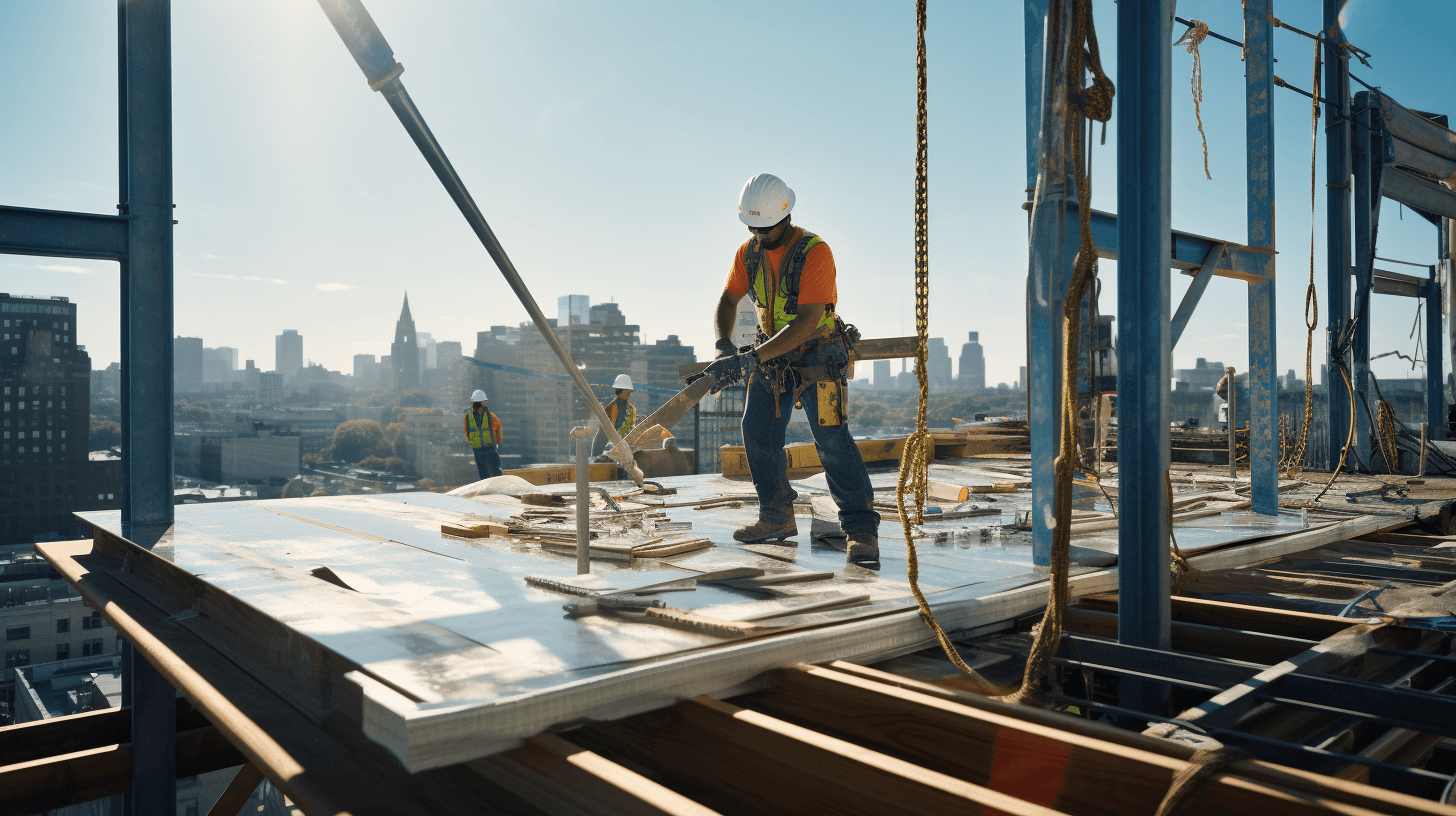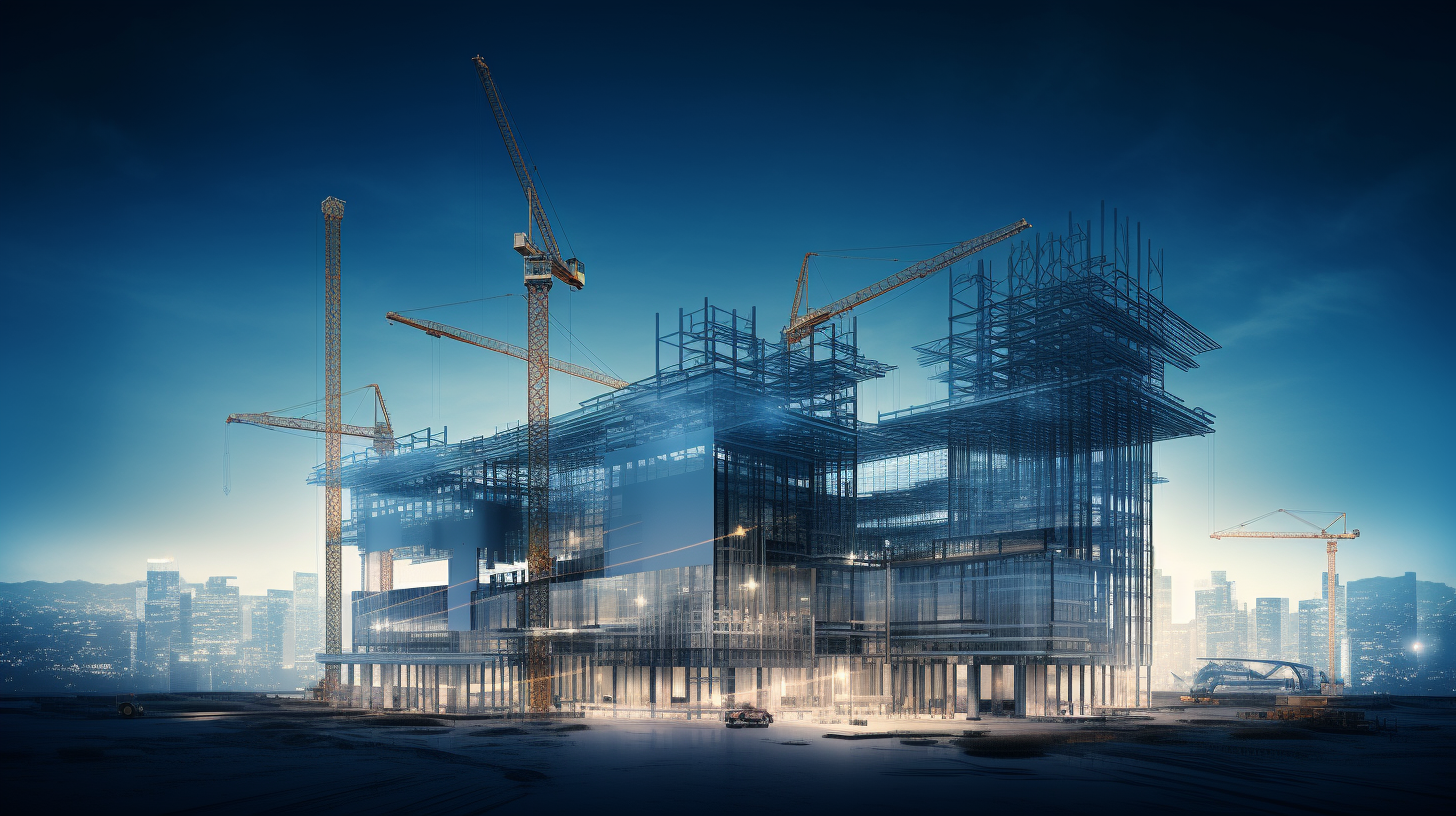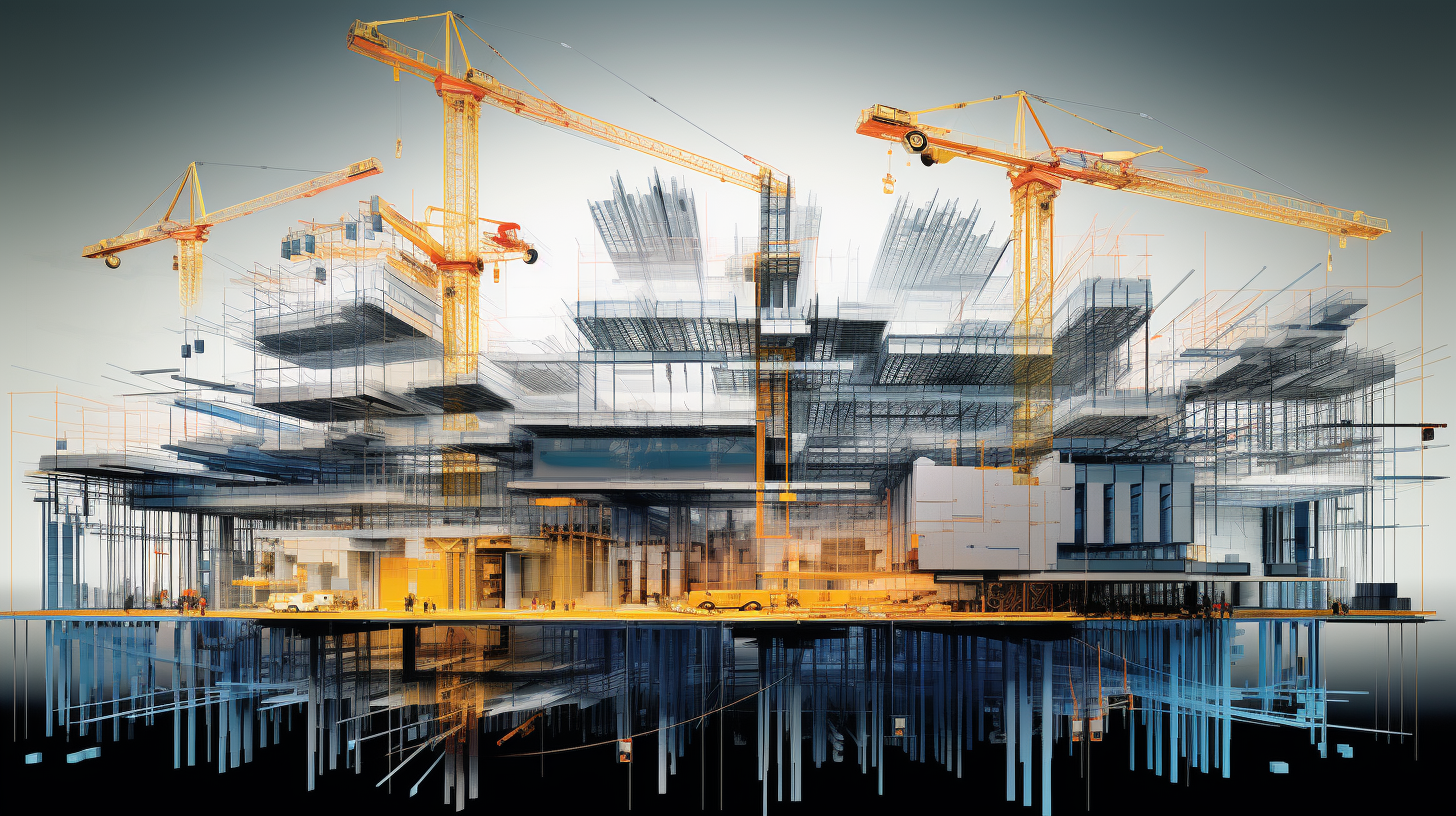The Art of Serenity: Utilizing Pastels in Interior Design for a Calming Ambiance
 24 Sep 2023
24 Sep 2023
 1396 View
1396 View

Studio Nine Constructions is a leading construction company near me that is revolutionizing the industry with its pioneering methods and modern techniques. With years of experience and a commitment to innovation, Studio Nine Constructions is reshaping the way buildings are designed and constructed. From sustainable practices to the use of advanced technologies, this construction company is making waves in the industry. Keep reading to discover the groundbreaking work of Studio Nine Constructions and how it is changing the face of construction.
Traditional construction methods have been the go-to approach for centuries, but with the advancements in technology and growing concerns for sustainability, innovative techniques are gaining momentum in the construction industry. Studio Nine Constructions is at the forefront of this change, utilizing cutting-edge methods that not only enhance efficiency but also minimize environmental impact. By embracing modular construction, for example, they can significantly reduce construction time and waste while maintaining quality. Additionally, the company incorporates 3D printing, prefabrication, and robotic automation to further streamline the construction process. In the next section, we will delve deeper into how these innovative techniques are reshaping the construction landscape and the benefits they offer in terms of cost-effectiveness and sustainability. Stay tuned!

Modular construction is on the rise and is set to revolutionize the way we build. This innovative approach involves constructing buildings in factory-like settings, where components or modules are prefabricated off-site and then transported to the construction site for assembly. This method offers numerous advantages over traditional construction methods.
One key benefit of modular construction is its ability to reduce construction time significantly. With components being fabricated simultaneously while site preparation is underway, projects can be completed in a fraction of the time compared to traditional construction. This not only allows projects to be delivered faster but also helps minimize disruptions to the surrounding area.
Furthermore, modular construction promotes sustainability by minimizing waste and energy consumption. The controlled environment of the factory ensures optimal material usage and reduces the risk of weather-related damages during construction. Additionally, the ability to recycle and reuse modules further reduces the environmental impact.
In terms of cost-effectiveness, modular construction offers potential cost savings. The streamlined process and reduced construction time result in lower labor costs. Additionally, economies of scale come into play as modules are mass-produced, allowing for bulk purchasing of materials and reduced overall costs.
With these impressive benefits, it's no surprise that modular construction is gaining popularity across the industry. In the next section, we will explore another pioneering technique that is reshaping construction landscapes: 3D printing. Stay tuned to learn more about this game-changing technology and its potential impact on the industry.
While modular construction is transforming the construction industry, another pioneering technique is revolutionizing the way we build: 3D printing. This innovative technology allows for the creation of three-dimensional objects by layering materials on top of each other.
In the realm of construction, 3D printing is making waves as it offers unprecedented design freedom and limitless possibilities. With the ability to print complex structures with intricate details, architects and engineers can push the boundaries of their creativity like never before.
One key advantage of 3D printing in construction is its potential to reduce material waste. Traditional construction often results in excessive material usage due to cutting and shaping materials to fit precise dimensions. However, with 3D printing, materials are only used as needed, minimizing waste and optimizing resource efficiency.
Additionally, 3D printing can significantly reduce construction time and costs. By eliminating many of the labor-intensive processes, such as formwork and scaffolding, construction projects can be completed in a fraction of the time. This not only saves money but also reduces disruptions to the surrounding area.
Furthermore, 3D printing opens up possibilities for sustainable construction practices. By using eco-friendly materials and reducing the need for transportation and shipping, this technology can have a positive impact on the environment.
As 3D printing continues to evolve and become more accessible, its potential in the construction industry is limitless. In the next section, we will delve deeper into the applications and benefits of 3D printing in construction. Stay tuned to discover how this game-changing technology is reshaping the future of building.

In addition to modular construction and 3D printing, another pioneering method revolutionizing the construction industry is the integration of smart technology. As the world becomes increasingly connected and automated, construction projects are embracing the use of smart devices and systems to improve efficiency, safety, and sustainability.
Smart technology in construction encompasses a wide range of applications. One of the most notable advancements is the use of sensors and Internet of Things (IoT) devices to monitor and control various aspects of the construction process. These sensors can track temperature, humidity, vibration, and other factors to ensure optimal conditions for construction activities and materials.
Moreover, smart technology enables construction managers to remotely monitor and manage construction projects. Through real-time data and analytics, they can identify potential issues, optimize performance, and make informed decisions promptly. This not only saves time and resources but also improves overall project outcomes.
Safety is another area where smart technology shines in construction. Wearable devices, such as smart helmets and vests, equipped with sensors and GPS, provide real-time data on workers' location, health, and potential hazards. This enables construction companies to proactively address safety concerns and mitigate risks.
In terms of sustainability, smart technology plays a crucial role in optimizing energy consumption and reducing environmental impact. Smart building systems can automatically adjust lighting, heating, and cooling based on occupancy and weather conditions, leading to significant energy savings. Additionally, the use of smart meters and monitoring systems allows for efficient resource management and waste reduction.
The integration of smart technology in construction is not without challenges. The industry must navigate issues related to data privacy, cybersecurity, and the need for skilled workers who can effectively leverage these technologies. Nonetheless, the benefits of smart technology in construction are undeniable and will continue to shape the industry's future.
In the next section, we will explore some of the emerging smart technologies in construction and their potential to transform the way we build. Stay tuned to discover the exciting possibilities that lie ahead.
As the world continues to grapple with the challenges of climate change and environmental degradation, the construction industry is taking significant steps towards adopting sustainability and eco-friendly approaches. These initiatives not only address the pressing issues of our time but also contribute to cost savings and long-term viability.
One of the key aspects of sustainability in construction is the use of renewable materials. Traditional construction materials like concrete and steel have significant environmental impacts due to their high carbon emissions and depletion of natural resources. In response, many innovative solutions are being explored, such as the use of bamboo, recycled materials, and even biodegradable alternatives.
Another important aspect is energy-efficient design and construction practices. Buildings are responsible for a significant portion of global energy consumption, so optimizing energy use is critical. Smart building systems, as mentioned in the previous section, offer great potential in this area by automatically adjusting energy consumption based on occupancy and environmental conditions.
In addition to reducing energy consumption, the industry is also focusing on alternative energy sources. Solar panels, wind turbines, and geothermal systems are being integrated into new construction projects as a way to generate clean and sustainable energy on-site.
Water conservation is another important consideration in sustainable construction. The industry is exploring technologies that reduce water consumption, minimize wastage, and improve water quality. These include water-saving fixtures, rainwater harvesting systems, and greywater recycling.
Furthermore, sustainable construction emphasizes the importance of waste reduction and recycling. The industry is finding innovative ways to repurpose construction waste, minimize landfill usage, and promote circular economy principles. Techniques such as modular construction and prefabrication also contribute to waste reduction by optimizing material usage and minimizing construction site debris.
As sustainability becomes a top priority for both consumers and regulatory bodies, green building certifications and standards are gaining traction. These certifications, such as LEED (Leadership in Energy and Environmental Design), provide a framework for evaluating and recognizing sustainable construction practices. Construction companies are increasingly striving towards achieving these certifications to showcase their commitment to sustainability.
In conclusion, sustainability and eco-friendly approaches are transforming the construction industry by integrating renewable materials, energy-efficient design, alternative energy sources, water conservation, waste reduction, and green building certifications. These initiatives not only contribute to a healthier planet but also create more resilient and cost-effective buildings. In the next section, we will delve into the exciting realm of virtual reality and augmented reality in construction. Stay tuned for a glimpse into the future of building design and construction processes.
Although the construction industry is making significant strides towards sustainability and innovation, it is not without its challenges. Implementing new methods and techniques often comes with its fair share of roadblocks. In this section, we will explore some of the challenges faced by the industry and how they can be overcome.
One of the biggest challenges is the resistance to change. The construction industry has a long-standing tradition of using conventional methods and materials, making it difficult for new ideas to gain acceptance. Convincing stakeholders, including architects, contractors, and investors, of the benefits and feasibility of sustainable practices can be a daunting task. However, by showcasing successful case studies, emphasizing long-term cost savings and environmental benefits, and providing training and education, this resistance can be overcome.
Another challenge lies in the cost of implementing new methods. Sustainable construction practices and innovative techniques often come with a higher upfront cost compared to traditional methods. This can deter some developers and contractors from embracing these approaches. However, it is important to consider the long-term benefits and returns on investment that come with sustainability. By factoring in energy savings, lower maintenance costs, and potential tax incentives or grants, the economic viability of these methods becomes clearer.
Furthermore, there may be regulatory barriers and outdated building codes that hinder the adoption of new methods. Many countries still have building regulations that favor traditional construction practices and materials, making it difficult for innovative solutions to be implemented. Advocacy and lobbying efforts are necessary to bring about policy reforms and create an enabling environment for sustainable construction.
Lastly, the industry must address the skills gap and lack of awareness surrounding new construction methods. Training and education on sustainable practices and modern techniques are essential for the successful implementation of these approaches. Collaboration between industry professionals, academia, and training institutions is key to ensuring that the workforce is equipped with the necessary skills and knowledge to embrace the future of construction.
In conclusion, while there are challenges and roadblocks in implementing new methods in the construction industry, they are not insurmountable. By addressing resistance to change, considering long-term cost savings, advocating for policy reforms, and promoting skill development, the industry can overcome these challenges and pave the way for a more sustainable and innovative future. In the next section, we will explore the exciting world of virtual reality and augmented reality in construction and how these technologies are revolutionizing the design and planning processes. Stay tuned for an immersive glimpse into the future of construction.
In the previous section, we discussed the challenges that the construction industry faces when implementing new methods and techniques. Despite these obstacles, the industry continues to push forward, embracing sustainability and innovation. Now, let's look ahead and explore the future of construction.
Virtual reality (VR) and augmented reality (AR) are two technologies that are revolutionizing the design and planning processes in construction. VR allows architects and designers to create immersive virtual environments, enabling stakeholders to visualize the end product before construction begins. This not only improves communication and collaboration but also helps identify design flaws and make necessary modifications early on, saving valuable time and resources.
AR, on the other hand, overlays digital information onto the real world, enhancing the physical environment. This technology has diverse applications in construction, from on-site building inspections and quality control to providing real-time information to construction workers through smart glasses.
The possibilities with VR and AR in construction are vast. They enable stakeholders to make better decisions, reduce errors, and improve overall efficiency. In the next section, we will delve deeper into these exciting technologies and explore their potential in revolutionizing the construction industry. Join us as we take a virtual leap into the future of construction.
The Art of Serenity: Utilizing Pastels in Interior Design for a Calming Ambiance
 24 Sep 2023
24 Sep 2023
 1396 View
1396 View
The Impact of Technology on Construction
 15 Jun 2023
15 Jun 2023
 1315 View
1315 View
Sustainable Design: Eco-Friendly Materials for Your Home
 05 Sep 2023
05 Sep 2023
 1311 View
1311 View
The Newest Construction Material Trends
 22 Jun 2023
22 Jun 2023
 1156 View
1156 View
How to Streamline Your Construction Supply Chain
 10 Mar 2023
10 Mar 2023
 1004 View
1004 View
Transform your child's space with our Kids' Room Makeovers - where fun meets....
 24 Oct 2023
24 Oct 2023
 406 View
406 View
Transform Your Patio into a Serene Outdoor Haven: Expert Tips and Tricks
 24 Oct 2023
24 Oct 2023
 661 View
661 View
Top Smart Home Devices for Modern Living
 24 Oct 2023
24 Oct 2023
 496 View
496 View
The Ultimate Showdown: Luxury vs. Budget Bedding - Which Will Reign Supreme?
 24 Oct 2023
24 Oct 2023
 581 View
581 View
Master the Art of Spring Refresh: Expert Tips on Decorating with Florals
 24 Oct 2023
24 Oct 2023
 481 View
481 View
Discover the Hidden Gems: Unveiling Vintage Treasures for Your Modern Spaces
 18 Oct 2023
18 Oct 2023
 598 View
598 View
The Impact of Color on Emotions: Discover How Interiors Shape Your Mood
 18 Oct 2023
18 Oct 2023
 814 View
814 View